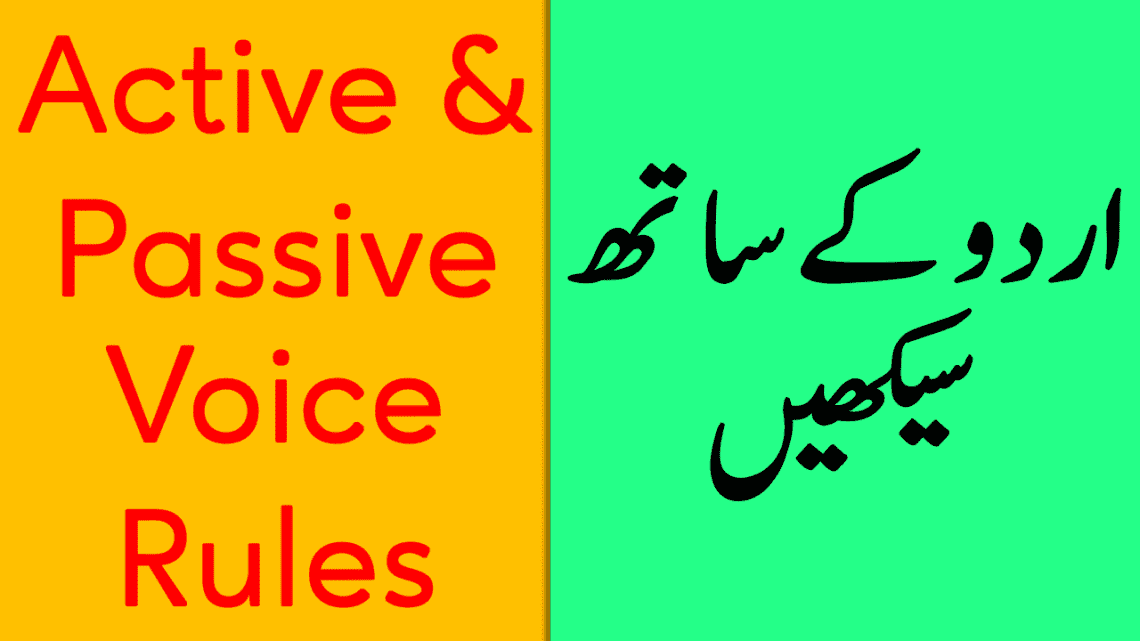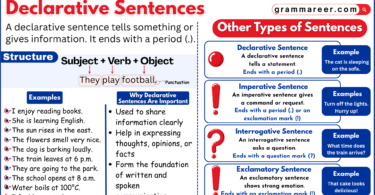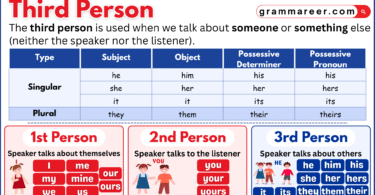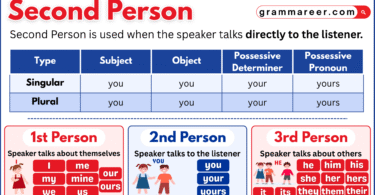Mastering active and passive voice is essential for improving sentence clarity and structure. In active voice, the subject performs the action, while in passive voice, the focus shifts to the object receiving the action. Understanding these rules helps in writing better sentences in both English and Urdu. In this blog post, we will break down the key rules, formulas, and examples to make learning easier.
📖 Want to learn more? Check out our grammar section!
Table of Contents
Active and Passive Voice Rules
What is Active Voice?
In active voice, the subject of the sentence performs the action of the verb. It makes sentences clear, direct, and concise. Active voice is commonly used in everyday speech and writing because it is easier to understand.
🔹 Example:
- She wrote a letter.
(Subject: She, Verb: wrote, Object: a letter)
In this sentence, “She” (subject) is doing the action “wrote” to the object “a letter.”
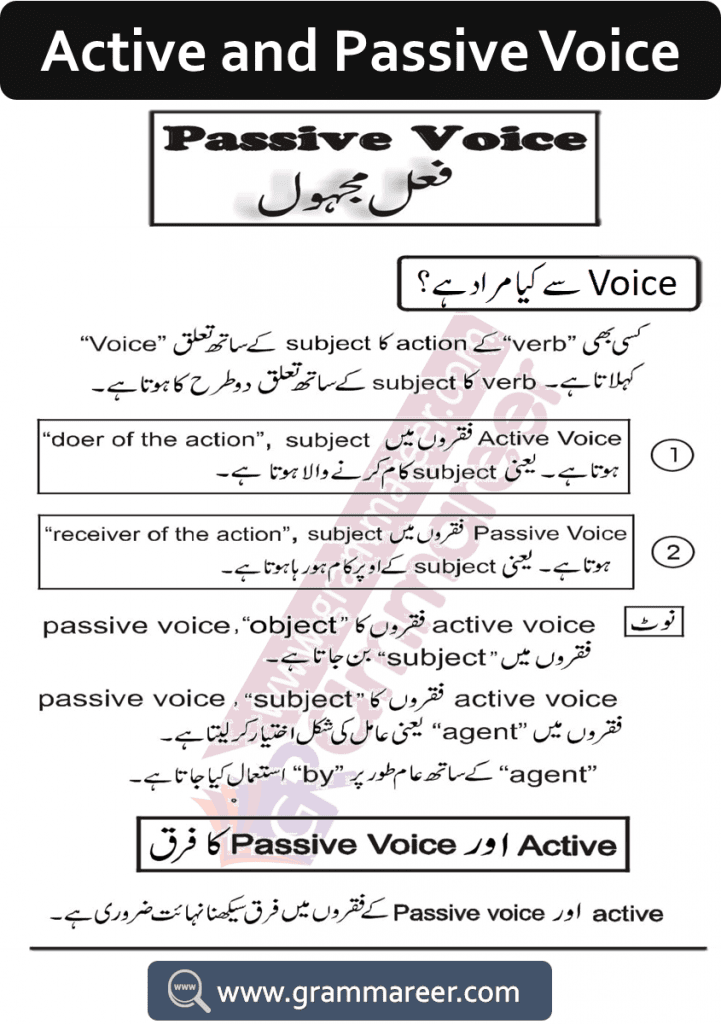
What is Passive Voice?
In passive voice, the object of the active sentence becomes the subject, and the action is performed on it rather than by it. The doer of the action (agent) is either mentioned later using “by” or omitted if it’s not important.
🔹 Example:
- A letter was written by her.
(Subject: A letter, Verb: was written, Agent: by her)
In this sentence, “A letter” (object in active voice) becomes the subject, and “was written” (passive verb) indicates the action received by it.
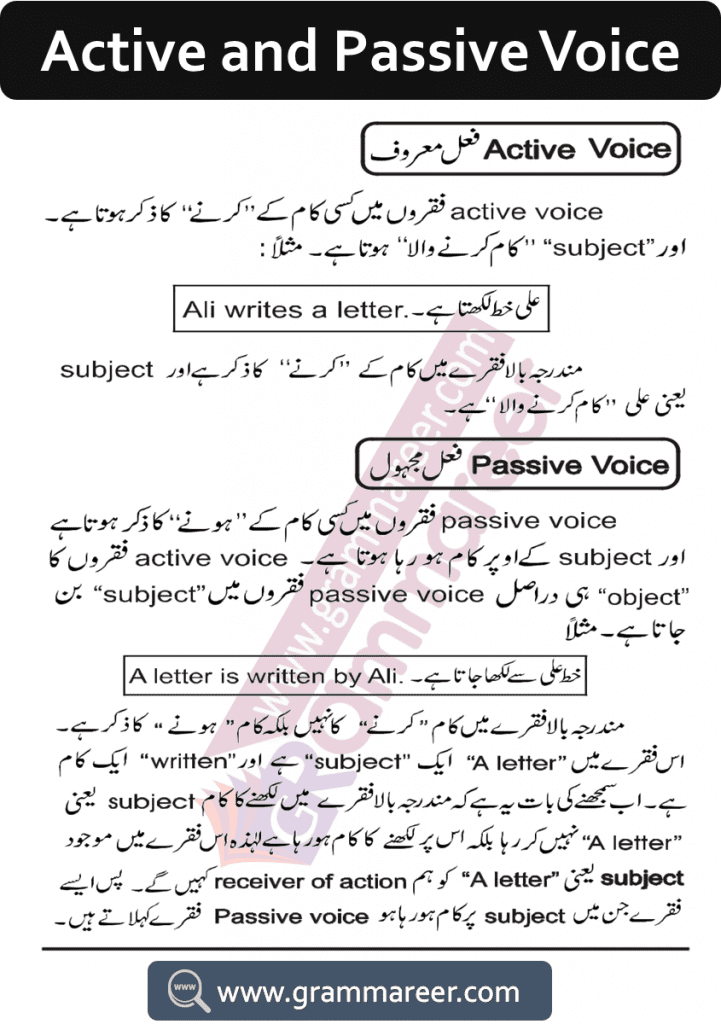
Here the question rises that how we can identify the passive voice sentences in English. we use the following verbs in place of verb “Be”.
Be, is, am ,are, was, were, been, being.
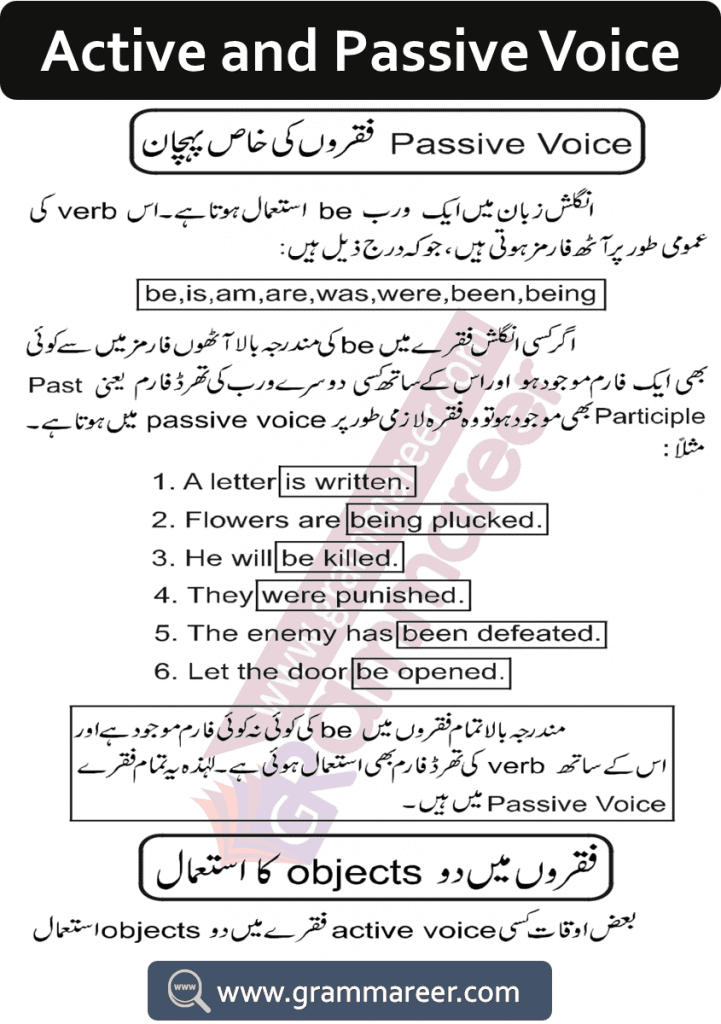
Look at the picture for further explanation.
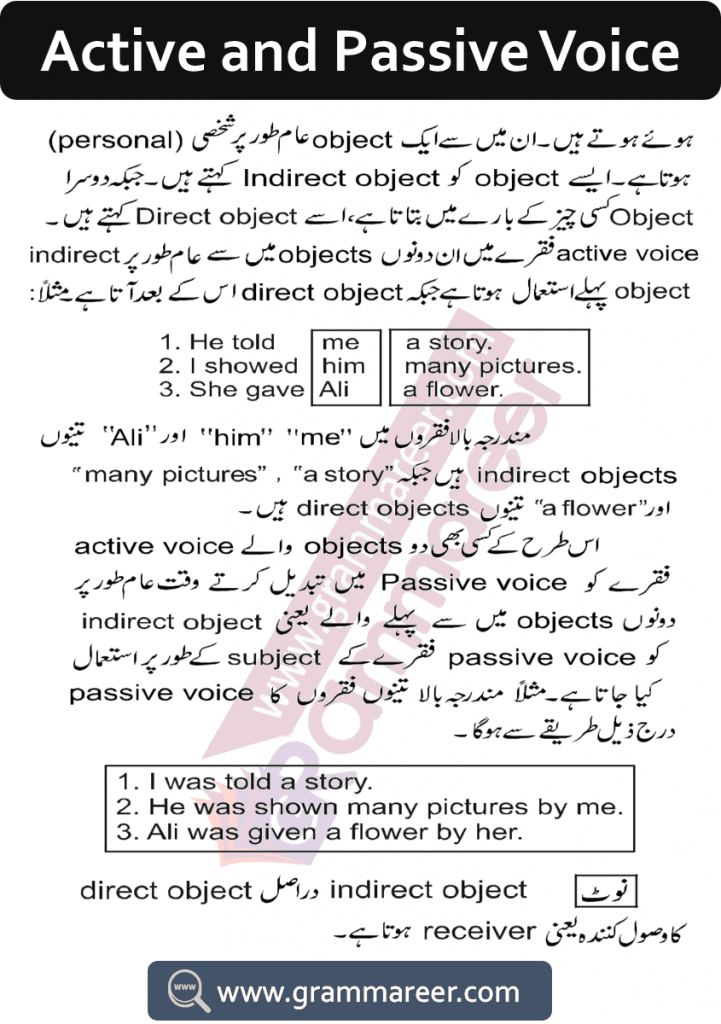
Conversion Rules:
- Identify the Object in the active sentence and place it at the beginning.
- Use the correct form of “to be” (is, am, are, was, were, been, being) according to the tense.
- Use the past participle (3rd form) of the verb.
- Add “by” before the subject (if needed).
Examples:
✅ He writes a letter. (Active)
➡ A letter is written by him. (Passive)
✅ She sang a song. (Active)
➡ A song was sung by her. (Passive)
✅ They will complete the project. (Active)
➡ The project will be completed by them. (Passive)
📌 Look at the picture for further explanation.
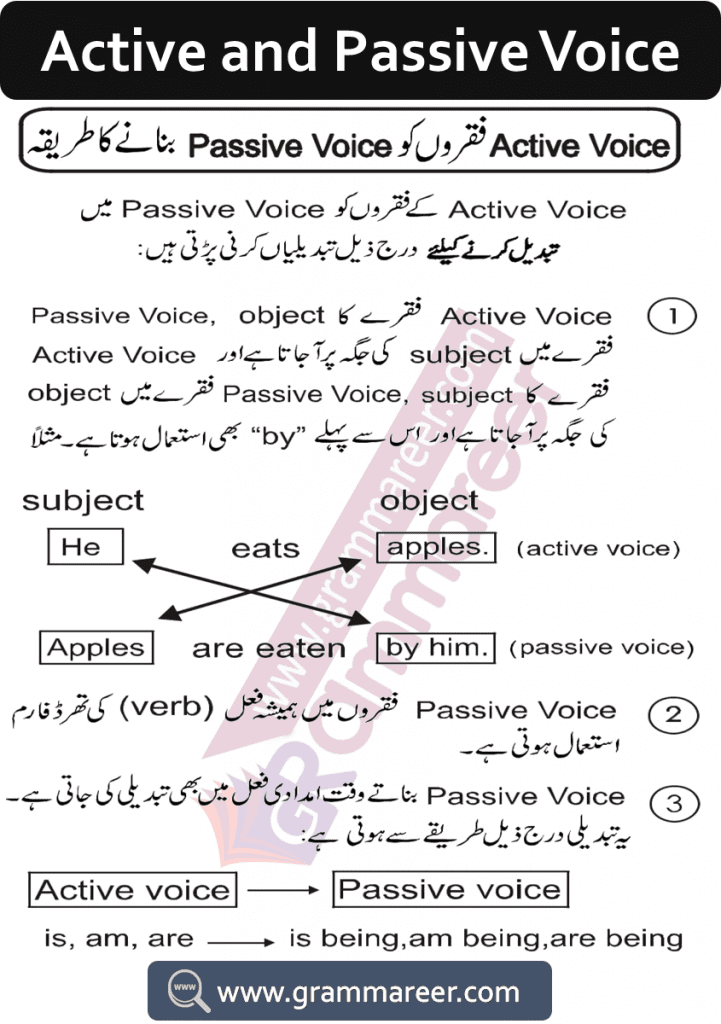
Changes in Helping Verbs
| Active Voice | Passive Voice |
| is , am, are | is being , am being, are being |
| Has, have | has been, have been |
| was, were | was being, were being |
| will, shall | will be, shall be |
| will have | will have been |
| shall have | shall have been |
| can | can be |
| could | could be |
| may | may be |
| might | might be |
| should | should be |
Important Changes in Pronouns
| Active Voice | Passive Voice |
| I | me |
| we | us |
| he | him |
| she | her |
| they | them |
| you | you |
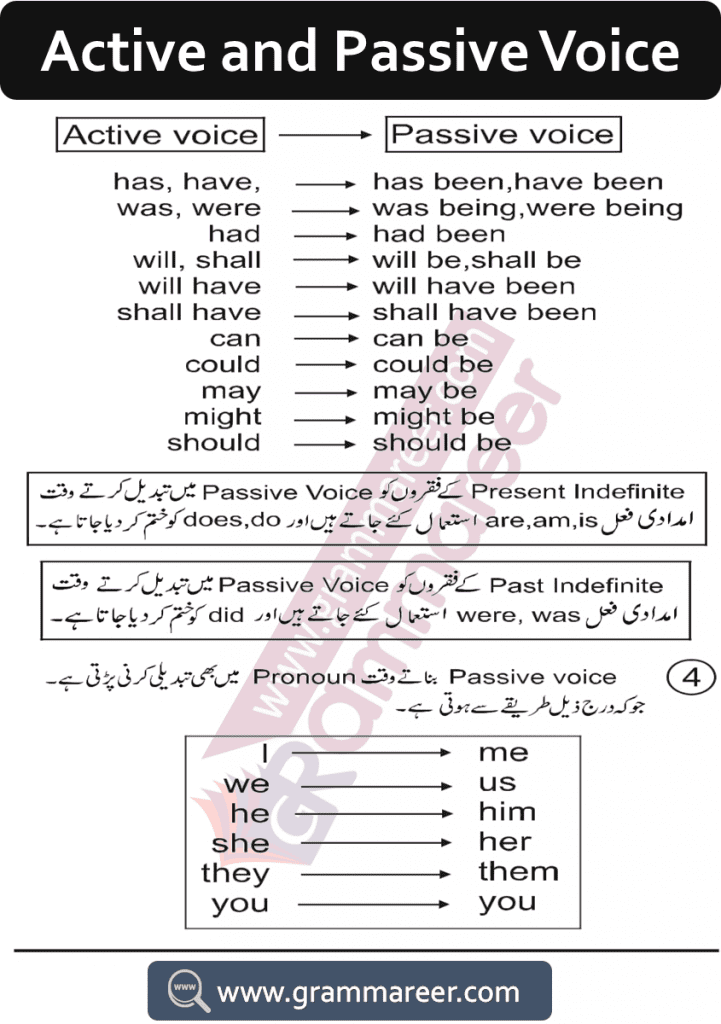
Formation of Passive voice sentences
There are four steps for making passive voice sentences using active voice.
Step 1
Place the Object of active voice sentence in place of passive voice subject and Place the subject of active voice sentence in place of passive voice Object.
Step 2
Changes in Helping verbs.
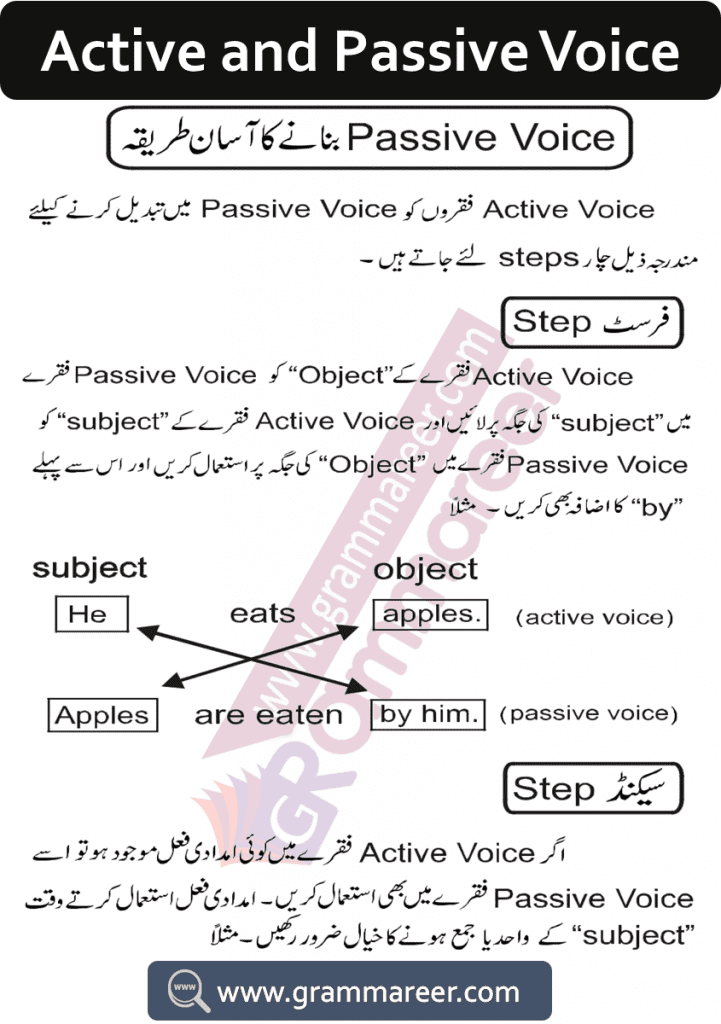
Step 3
Changes in Subjects.
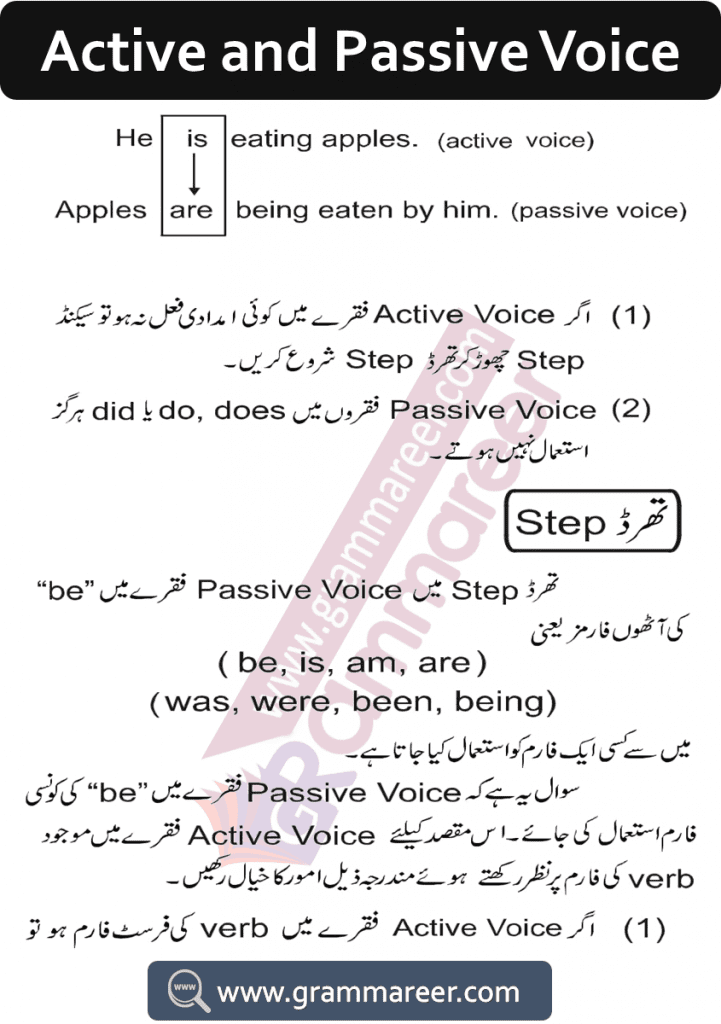
Step 4
Use of Forms of verb
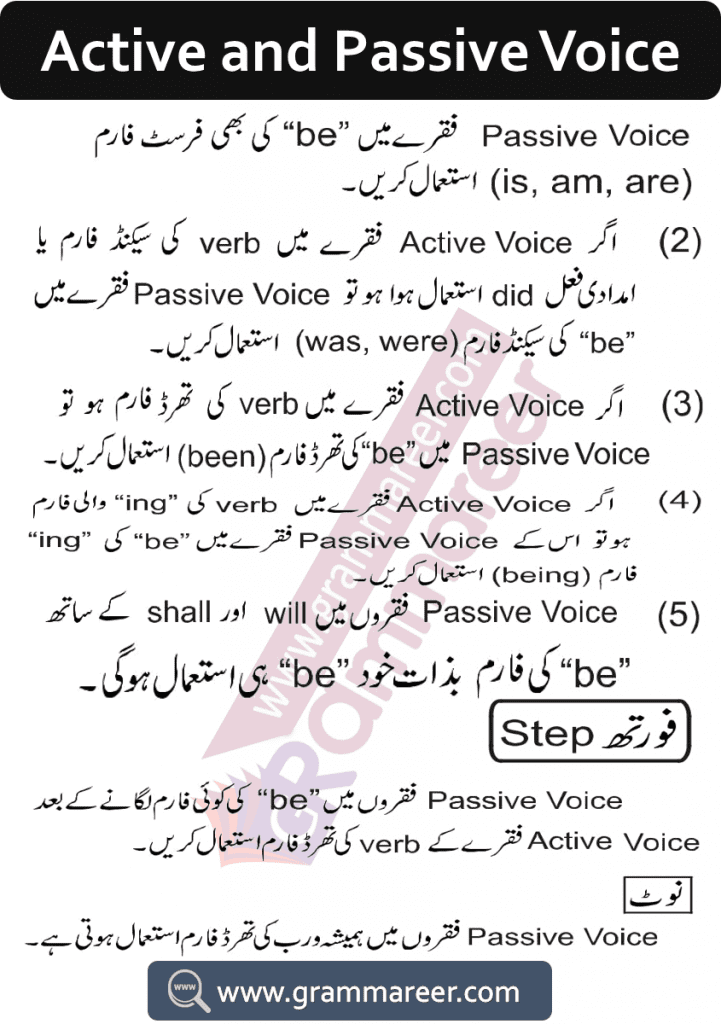
You May Also Like

